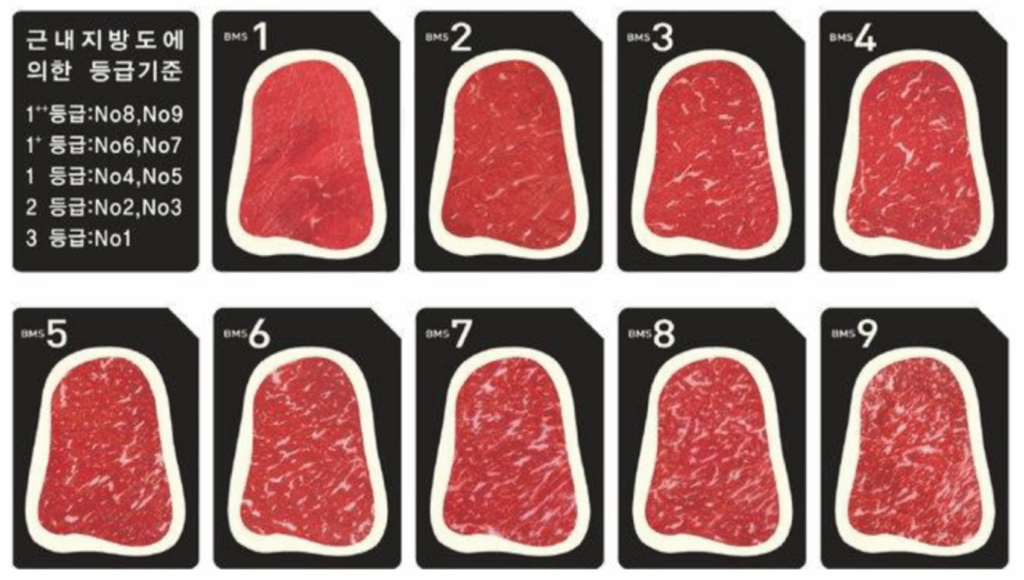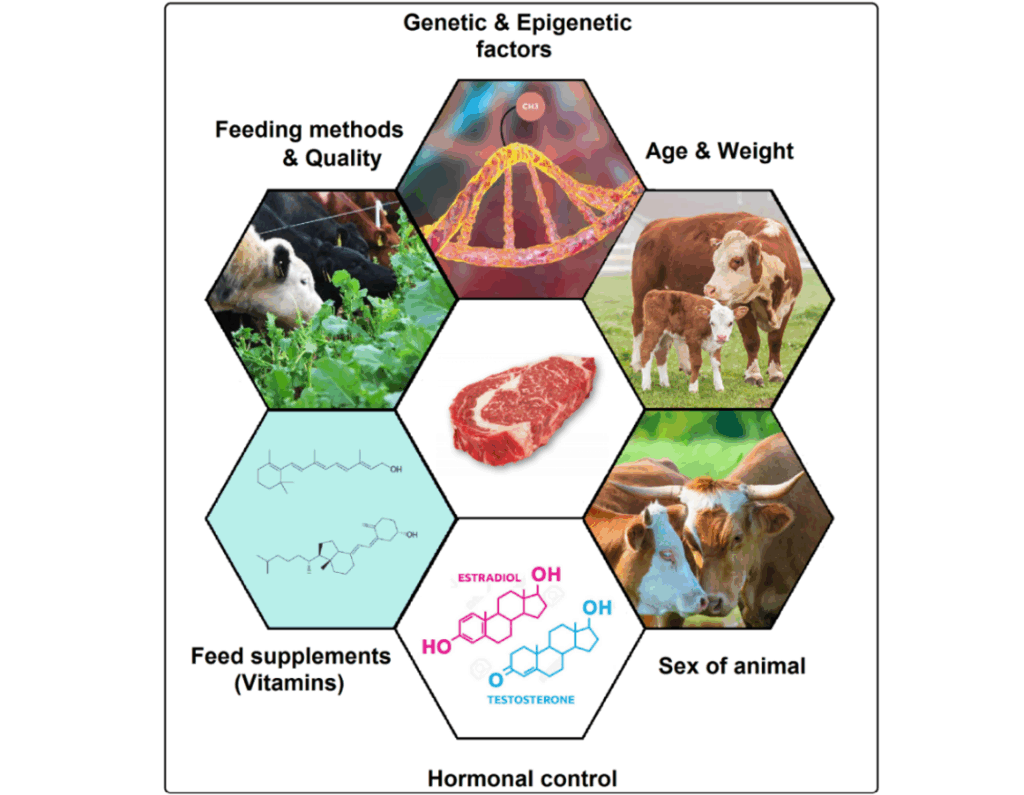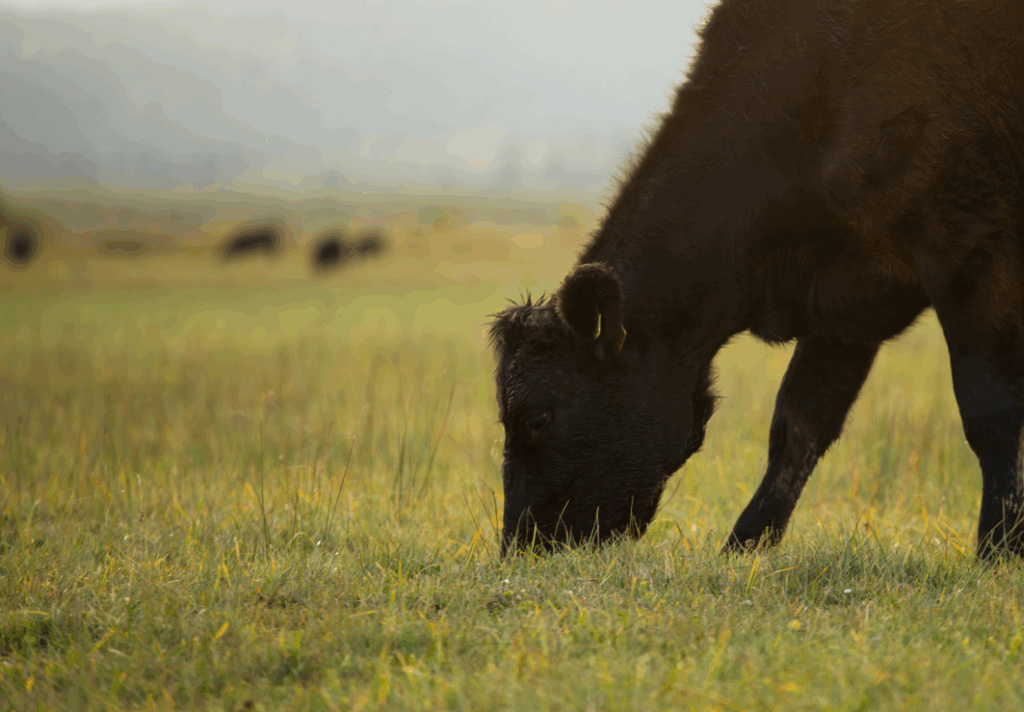A comprehensive study authored with the contribution of our colleagues has been published in the international scientific journal Acta Universitatis Sapientiae. The paper presents the main factors influencing marbling in beef. Below is a short summary highlighting the key findings of the research.
The full study is available at the following link: Factors influencing marbling in beef cattle
The quality of beef is influenced by many factors, but one of the most visible and appreciated is marbling. This refers to the fine layers of fat deposited inside the muscle, visible as white streaks or veins in the meat. Intramuscular fat – also known as IMF – is what makes beef tender, juicy, and full of flavor. It is no coincidence that in countries such as Japan, South Korea, and Australia, marbling is the main criterion for judging premium beef.
The formation of fat cells begins during the fetal stage and continues throughout the animal’s life. The extent of marbling is determined by three main categories of factors: genetics, nutrition, and management practices. Genetics set the potential – how much IMF a breed can accumulate. Nutrition determines how much of that potential is realized, while management practices such as weaning time or castration fine-tune the final outcome.

Not all cattle breeds are capable of achieving the same degree of marbling. The Japanese Wagyu breed is famous for its exceptionally high levels of IMF: with long, intensive feeding, intramuscular fat can account for 30–40% of the meat. Similarly, the Korean Hanwoo breed is renowned for its richly marbled beef. In contrast, European breeds such as Angus or Hereford typically show moderate levels, while Bos indicus cattle, like the Brahman, usually produce leaner beef. Genetics therefore provide the foundation, but without proper feeding and care, premium quality cannot be achieved.

Feeding plays a decisive role in the development of marbling. Even the diet of the pregnant cow influences how many fat cells the calf will be able to form later in life. High-energy diets, especially cereal-based rations such as corn, stimulate intramuscular fat deposition. On the other hand, cattle raised exclusively on pasture tend to have leaner meat, even if the flavor is highly appreciated for its natural character.
Vitamins also play an important part. Studies show that limiting vitamin A intake during the later stages of finishing can enhance marbling. Vitamin C supports the development of fat cells, while vitamin D has a more indirect influence, being crucial for bone health and overall development, which in turn can affect meat quality.
Breeding and management technologies have a strong impact on beef quality. Castrating male calves generally increases IMF levels and produces more tender beef. Early weaning, combined with energy-rich feeding, can also raise marbling scores. Slaughter age and weight are important as well: older and heavier cattle usually have higher marbling, although beyond a certain point, the extra costs outweigh the benefits.
For consumers, marbling translates directly into eating experience. Well-marbled beef is more tender, juicier, and more flavorful. During cooking, the intramuscular fat melts and enriches the meat with a fine texture and complex taste. This is why premium beef commands higher prices worldwide. At the same time, producing such beef is more expensive, as it requires longer finishing periods and more costly feeds.
Marbling is one of the key factors that define the quality of beef. It results from the interplay of genetics, nutrition, and management. While Wagyu and Hanwoo set the global standard, careful feeding and breeding practices can significantly improve the quality of other breeds as well. As demand for premium beef continues to grow, increasing attention is being paid to optimizing marbling – ensuring that every steak is not only delicious but also unforgettable.

Leave a Comment: